 Carl Graham Fisher, the primary mover and shaker behind the Indianapolis Motor Speedway and both the Lincoln and Dixie Highways, had lots of stories. One in particular is popular among road fans and was originally told by Fisher to partially explain his interest in improving roads and their marking. I’ve heard and read multiple versions of the story and am totally unequipped to distinguish embellishments from additional accurate details. So here’s a version of the story which I believe to be true at its core and possibly in some of the details, too.
Carl Graham Fisher, the primary mover and shaker behind the Indianapolis Motor Speedway and both the Lincoln and Dixie Highways, had lots of stories. One in particular is popular among road fans and was originally told by Fisher to partially explain his interest in improving roads and their marking. I’ve heard and read multiple versions of the story and am totally unequipped to distinguish embellishments from additional accurate details. So here’s a version of the story which I believe to be true at its core and possibly in some of the details, too.
Fisher and some friends had taken a day trip from Indianapolis and were returning in the dark and rain. They came to a point where three roads joined together but none of them could remember which they used earlier in the day. After some inconclusive discussion, they noticed a sign which they thought might indicate which road led back home. It was mounted high on a pole and unreadable in the dark and wet. It was somehow determined that Fisher would climb the pole to read the sign. Some say he climbed the pole once and had to return to the ground for matches. Some say that the first few matches sputtered or were doused by the rain. Some say that it was his very last match that provided a glimpse of the sign’s message. All versions agree on what that message was. Hoping for the name of a town or other landmark, all he saw was “Chew Battle Ax Plug”.
Prior to Tuesday, that funny and revealing story supplied 100% of my knowledge of Battle Ax Plug. On Tuesday I was on my way to Greenville, Ohio, and had left home with enough time in the schedule to try out a new restaurant on the way. I jogged off of my normal path to reach the town of Arcanum. It is a small town in the county I grew up in but I don’t remember much about it and doubt I ever knew all that much. I’d heard good things about the restaurant’s food but knew almost nothing about it beyond that. It was quite a happy surprise to see the big Battle Ax sign that heads this article on the side of the building housing the restaurant. I’ve since learned a little more about the brand.
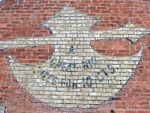 Battle Ax Plug was the very definition of a “loss leader”. Between 1895 and 1898, US tobacco companies were embroiled in the “Plug Wars”. Another aptly named combatant was the Scalp Knife brand from Liggett and Meyers. The American Tobacco Company lost about a million dollars a year with their Battle Ax brand but emerged from the wars with approximately 90% market share. The fading slogan on the sign’s ax head is “A GREAT BIG PIECE FOR 10 CTS.” Those were, back in the day, fighting words.
Battle Ax Plug was the very definition of a “loss leader”. Between 1895 and 1898, US tobacco companies were embroiled in the “Plug Wars”. Another aptly named combatant was the Scalp Knife brand from Liggett and Meyers. The American Tobacco Company lost about a million dollars a year with their Battle Ax brand but emerged from the wars with approximately 90% market share. The fading slogan on the sign’s ax head is “A GREAT BIG PIECE FOR 10 CTS.” Those were, back in the day, fighting words.
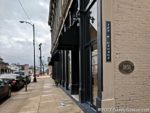
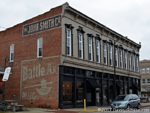 The building behind the sign has its own story and it’s a great one. Built by John Smith in 1851, it housed the family store until 1985. At its closing it was the longest operating family owned business in Ohio. It began as a typical general store offering an assortment of dry goods but eventually meat, produce, and other grocery items were added as were men’s and women’s clothing.
The building behind the sign has its own story and it’s a great one. Built by John Smith in 1851, it housed the family store until 1985. At its closing it was the longest operating family owned business in Ohio. It began as a typical general store offering an assortment of dry goods but eventually meat, produce, and other grocery items were added as were men’s and women’s clothing.


 Yes, I certainly got distracted but I did eventually make it to breakfast. One of the places where I’d heard good things about Old Arcana was Ohio Magazine which named their French Toast the best in the state. The magazine quotes co-owner Leslie Handshoe-Suter calling the toast “decadent” and it certainly is. The full name is Bourbon Praline French Toast. Following the meal — and some really good coffee — I chatted with chef and co-owner Jeff Besecker about the menu, the business, and the building. Jeff pointed out the building’s owner, Angie, sitting at one on the tables and I also chatted with her and a table mate who had worked in the store that once filled the entire building. Angie operates Smith’s Merchants which shares the building with the restaurant.
Yes, I certainly got distracted but I did eventually make it to breakfast. One of the places where I’d heard good things about Old Arcana was Ohio Magazine which named their French Toast the best in the state. The magazine quotes co-owner Leslie Handshoe-Suter calling the toast “decadent” and it certainly is. The full name is Bourbon Praline French Toast. Following the meal — and some really good coffee — I chatted with chef and co-owner Jeff Besecker about the menu, the business, and the building. Jeff pointed out the building’s owner, Angie, sitting at one on the tables and I also chatted with her and a table mate who had worked in the store that once filled the entire building. Angie operates Smith’s Merchants which shares the building with the restaurant.
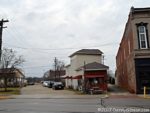 When I first saw the round windows in the Smith Building, they made me think of the round openings I had seen in electric train power stations. When I later learned that the electric powered Dayton & Union interurban once occupied the gravel path in the left half of this picture I’d have almost certainly grasped the power station theory even tighter if I didn’t already know that it wasn’t at all possible. Before I even spoke with Jeff, I’d learned from my waitress that the windows were original from the 1850s and from Jeff and Angie I learned that the building was in constant use as a store during the interurban’s coming and going in the early twentieth century. Headquarters for the Arcanum Historical Society is just out of frame to the left of that last picture. It’s open on some Saturday mornings so I think I’ll come back, learn some more about this town I grew up near, and try another item from that inviting breakfast menu.
When I first saw the round windows in the Smith Building, they made me think of the round openings I had seen in electric train power stations. When I later learned that the electric powered Dayton & Union interurban once occupied the gravel path in the left half of this picture I’d have almost certainly grasped the power station theory even tighter if I didn’t already know that it wasn’t at all possible. Before I even spoke with Jeff, I’d learned from my waitress that the windows were original from the 1850s and from Jeff and Angie I learned that the building was in constant use as a store during the interurban’s coming and going in the early twentieth century. Headquarters for the Arcanum Historical Society is just out of frame to the left of that last picture. It’s open on some Saturday mornings so I think I’ll come back, learn some more about this town I grew up near, and try another item from that inviting breakfast menu.
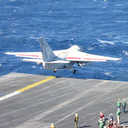 This picture is from my 2004 Big E, DC, and the Cardinal trip. The trip appears in my top ten “Decent” list and it certainly deserves to be there. The Big E in the title is the USS Enterprise, the world’s first nuclear powered aircraft carrier. My youngest son was serving aboard the huge carrier at the time and I was privileged to be part of a three day Tiger Cruise as she moved from Florida to her home port at Newport News, Virginia. With no military experience of my own, those few days sleeping and eating with my son’s crew mates was quite educational even though it was a spruced-up danger-free family-style version of life at sea. All airplanes were removed from the carrier before we civilians came on board but a few returned to provide landing and take-off demonstrations. The photo shows a S-3B Viking being launched.
This picture is from my 2004 Big E, DC, and the Cardinal trip. The trip appears in my top ten “Decent” list and it certainly deserves to be there. The Big E in the title is the USS Enterprise, the world’s first nuclear powered aircraft carrier. My youngest son was serving aboard the huge carrier at the time and I was privileged to be part of a three day Tiger Cruise as she moved from Florida to her home port at Newport News, Virginia. With no military experience of my own, those few days sleeping and eating with my son’s crew mates was quite educational even though it was a spruced-up danger-free family-style version of life at sea. All airplanes were removed from the carrier before we civilians came on board but a few returned to provide landing and take-off demonstrations. The photo shows a S-3B Viking being launched.
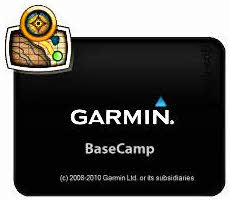 It looks like Garmin BaseCamp first appeared in 2008. I don’t recall when I first downloaded it but I do recall that it sucked. I use Garmin hardware and Garmin software is required to communicate with it. BaseCamp was the intended replacement for their MapSource program and, while I was hardly a fan of MapSource, at least it didn’t crash or hangup too often. Early BaseCamp did both somewhat regularly and its user interface was no more intuitive to me than MapSource’s. I put off switching as long as I could but the day came when I was forced to replace a program I didn’t like at all with one I disliked even more.
It looks like Garmin BaseCamp first appeared in 2008. I don’t recall when I first downloaded it but I do recall that it sucked. I use Garmin hardware and Garmin software is required to communicate with it. BaseCamp was the intended replacement for their MapSource program and, while I was hardly a fan of MapSource, at least it didn’t crash or hangup too often. Early BaseCamp did both somewhat regularly and its user interface was no more intuitive to me than MapSource’s. I put off switching as long as I could but the day came when I was forced to replace a program I didn’t like at all with one I disliked even more.







